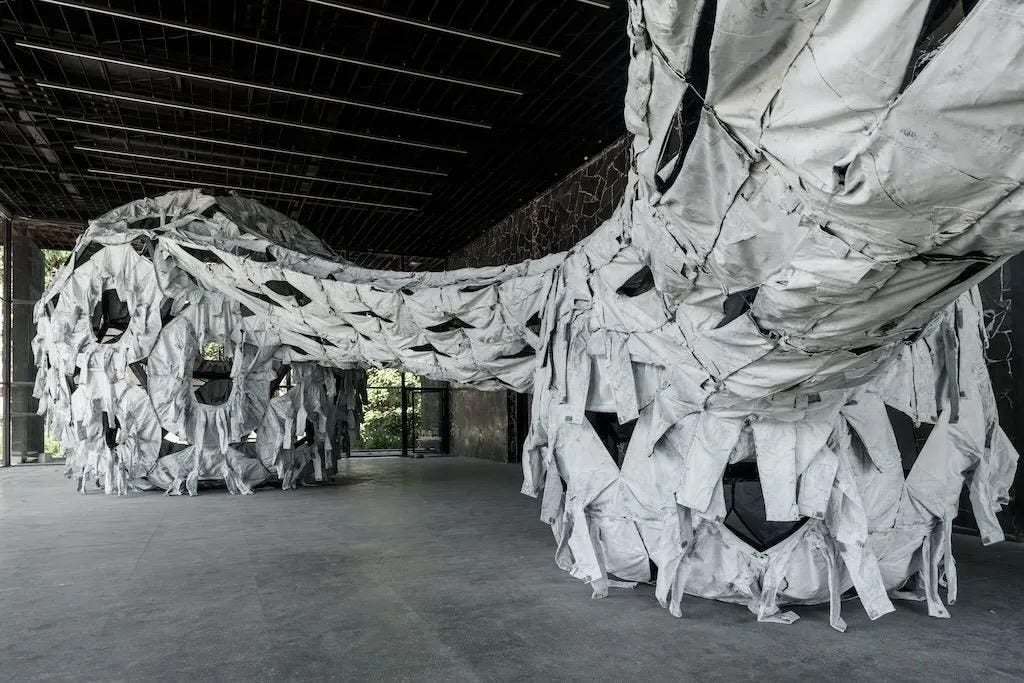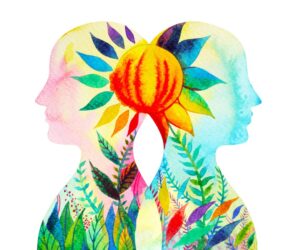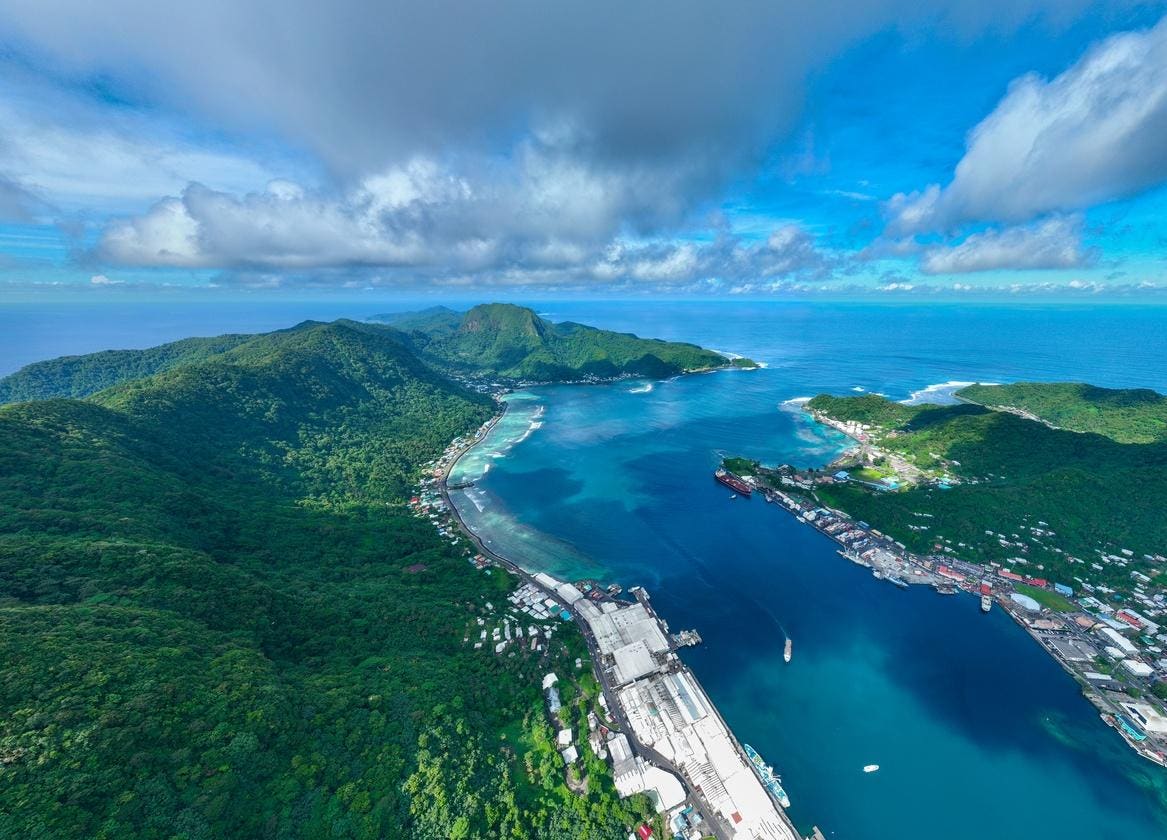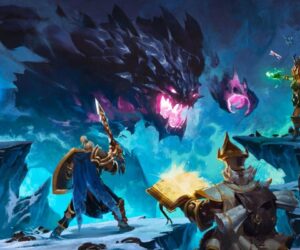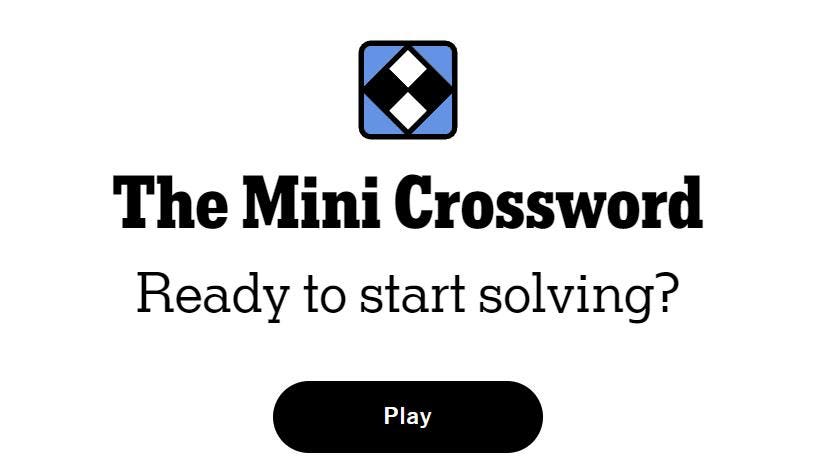Ribbon International, which commissioned Ai Weiwei’s new installation in Kyiv, calls the work “a dialogue between order and concealment, rationality and erasure.”
Dmytro Prutkin/Ribbon International
Ai Weiwei’s dissonant new large-scale installation in Kyiv, Ukraine, bears the title “Three Perfectly Proportioned Spheres and Camouflage Uniforms Painted White.” The name leaves little doubt as to what viewers will encounter.
Painted camouflage fabric drapes over mathematically precise spheres that pay homage to Leonardo da Vinci’s illustrations in De Divina Proportione, a 1509 book on math by Luca Pacioli. The famed Chinese artist and activist says the spheres reflect Renaissance ideals of rational thought, logic and humanism, while the camouflage patterns peek through the white paint signify the chaos of war and how it ruptures all sense of harmony and order.
“I think that in any situation, any human condition, we can find different levels of order,” the artist told The Kyiv Independent. “Order can be political, but it can also be moral: how we define right and wrong, how we try to proportionally understand events, to control and limit the damage. How do we value human life above politics? These are the different kinds of orders we must establish.”
A close look at the custom camouflage material reveals images of domestic animals and wildlife, often overlooked victims of war.
Dmytro Prutkin/Ribbon International
The installation opened Sunday and will remain on view through November 30 at Pavillion 13, an exposition hall constructed in 1967 to showcase the coal-mining achievements of the Ukrainian Soviet Socialist Republic. The recently renovated building now has glass walls that blur the line between the interior and exterior worlds. Ribbon International, a nonprofit supporting historic and contemporary Ukrainian arts and culture, commissioned the sweeping sculpture, which it calls a calls “a dialogue between order and concealment, rationality and erasure.”
“Three Perfectly Proportioned Spheres and Camouflage Uniforms Painted White” marks AI Weiwei’s first commission in the embattled country. To construct it, he collaborated with Ukrainian producers, metalworkers and garment makers.
Seeing War’s Fallout Firsthand
In preparation for the piece, the artist visited Ukraine numerous times, traveling beyond the capital to the front lines to speak firsthand with soldiers, veterans, medical teams and others about the costs of the ongoing deadly conflict sparked by Russia’s 2022 invasion. A closer look at the custom camouflage fabric beneath the white paint reveals it’s not typical of military uniforms. Instead, it displays intimate images of domestic animals and wildlife, often overlooked victims of war that also serve as symbols of the impact of armed conflict on life’s natural flow.
“I came here not just to hold an exhibition, but to understand what is happening and how the Ukrainian people have managed to fight this brutal war,” the artist told The Kyiv Independent. “Being here inspired me to decide to create the exhibition, as a way to express my solidarity with the people and, hopefully, contribute in some small way to the pursuit of peace for this country.”
Ai Weiwei’s work frequently champions free speech, gives a voice to the downtrodden. A vocal critic of the Chinese government’s stance on democracy and human rights, was himself imprisoned for 81 days in 2011.
“My artworks are not merely an aesthetic expression,” the artist said in a statement about the Ukraine exhibition, “but also a reflection of my position as an individual navigating immense political shifts, international hegemonies and conflicts.”

